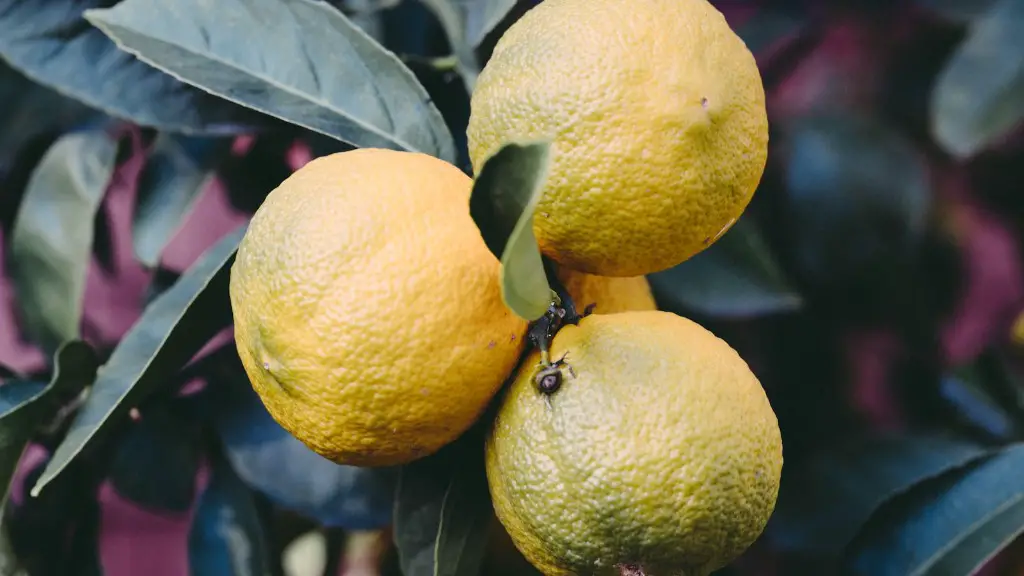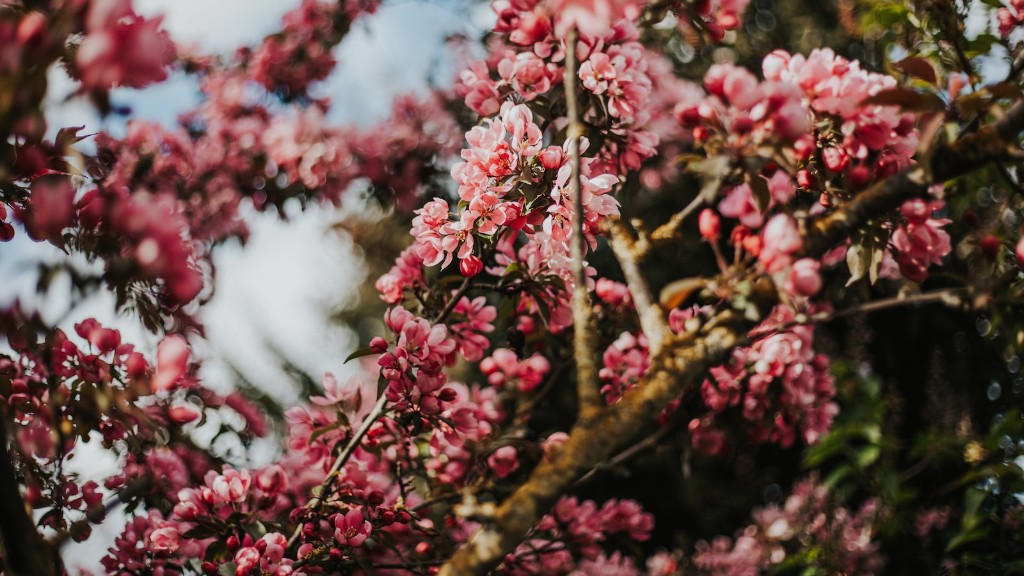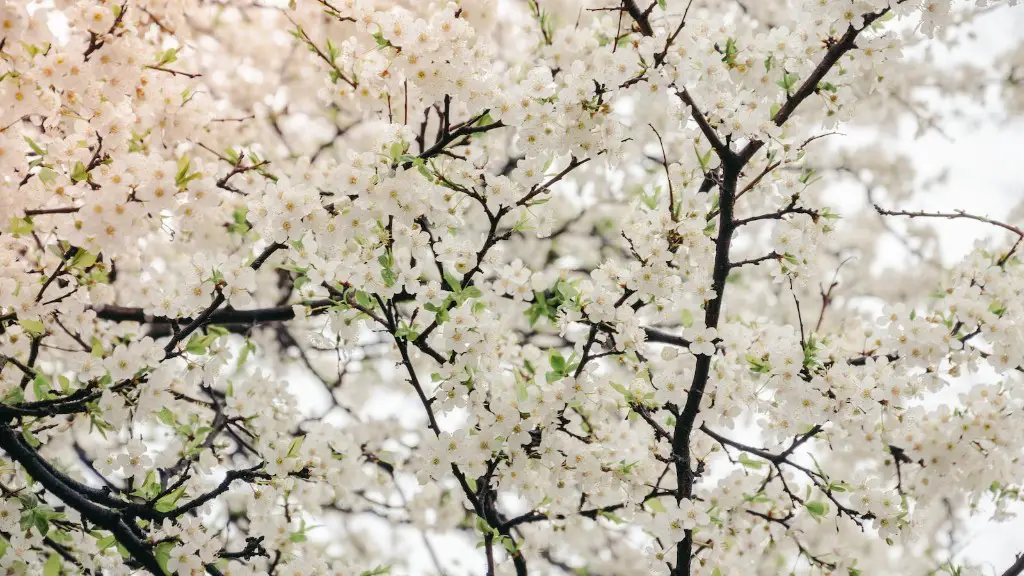Lemon trees are a great addition to any home, but when the weather gets chilly, it is important to know the right temperature that your lemon tree should be inside the home. In general, lemon trees prefer temperatures above 45 degrees Fahrenheit, but they can tolerate temperatures down to 40 degrees Fahrenheit. While this is true for most varieties, it is always important to research the specific variety of lemon tree that you have.
When considering bringing your lemon tree inside, it is also important to take into account humidity levels. Lemon trees require high humidity levels to thrive, which usually requires a temperature around 70 degrees Fahrenheit with at least 60% relative humidity. To achieve this, you can mist the leaves of the tree at least a couple of times a week and provide the roots with sufficient drainage.
The outside temperature will also have an effect on the type of temperature your lemon tree is comfortable with indoors. If it is particularly cold outdoors, you may need to increase the temperature indoors for your lemon tree to feel comfortable as it will be trying to adapt to the cooler air.
It is important to watch out for any signs that your lemon tree is not doing well under the conditions you have provided. These signs include yellow leaves or damaged stems, which may be a result of too high or too low of a temperature. You should also monitor the light levels your lemon tree is exposed to and be careful not to let it get too much direct sunlight inside your home, as this can also cause damage.
When watering your lemon tree, you should also take into account the temperature. Lemon trees need more frequent waterings when the temperature is higher, as the warmer air causes them to lose more moisture. On cooler days, the waterings should be reduced. Be sure to always check the soil of your lemon tree before adding water.
Overall, it is important to understand the temperature preferences of your specific lemon tree when bringing it inside. Research is key to providing your lemon tree with the best care. With the right temperature and humidity levels, your lemon tree can thrive indoors and provide you with lots of beautiful, ripe lemons.
Placement of a Lemon Tree Inside
When deciding where to place your lemon tree inside, there are a few things to take into account. To start, lemon trees prefer a spot with full sun and high humidity. This means that you should try to find a spot near a window, ideally facing south with at least 6-8 hours of direct sunlight a day. During the winter months, it may be necessary to supplement the tree with an artificial light source.
Humidity levels are also an important factor when positioning your lemon tree. To increase the humidity levels around your tree, you can mist the leaves or set up a humidifier nearby. With proper placement and the right level of moisture, your lemon tree will flourish indoors.
You should also take into consideration the type of pot your lemon tree is in. Clay pots retain more moisture and can be beneficial, especially on those particularly cold days. If you are using a plastic pot, it is best to place the tree on a tray filled with pebbles so that the tree is sitting in a bed of water which can help to maintain humidity levels.
Finally, make sure that your lemon tree is away from any type of heater or direct heat source such as a radiator or an air conditioner. Such sources create an unfavorable environment for the lemon tree and can interfere with the temperature and humidity levels.
What Necessary Accessories are Needed for a Lemon Tree Inside
There are a few necessary accessories you may need when bringing your lemon tree inside. The first is a good pair of gardening shears to prune the tree and help it to stay healthy. By removing any dead or diseased branches and weak foliage, you can help keep the tree’s shape and encourage new growth.
Having a thermometer and a moisture meter is also a good idea when bringing a lemon tree inside. As mentioned previously, lemon trees need specific temperature and humidity levels to thrive, and a thermometer and a moisture meter can help you to keep track of those levels easily. You can use a digital thermometer or a damp cloth to test the moisture levels.
Finally, you may want to invest in a plant stand or shelf that is specifically designed for citrus fruits. Such stands are often equipped with adjustable shelving and water trays that make it easier to maintain the correct moisture for your tree. Additionally, since lemon trees are evergreen and can grow quite tall, a plant stand can provide the necessary support to help the tree reach its full potential.
Signs of a Healthy Lemon Tree Inside
Visually, there are many signs of a healthy lemon tree. The leaves should be a deep green color and the branches should appear strong and upright. New growth should also be visible, with healthy-looking foliage appearing amongst older leaves.
The tree should also be producing fruits. If you see flowers alongside lemons on the tree, it is a good indication that it is healthy, as healthy trees will produce flowers and fruits simultaneously. The lemons themselves should be plump and the skins should be smooth and not brittle.
The volume and frequency of waterings is also an indication of how well your lemon tree is doing. If your tree is healthy, it should require waterings every 2-3 weeks. Additionally, the soil should remain moist and be free of compacted root zones as well as any visible pests. Proper trimming, fertilization, and pest control can also help give your tree the healthy boost it needs to flourish indoors.
Common Issues of Lemon Trees Inside
There are a few common issues to look out for when keeping your lemon tree indoors. Over-watering is the most common problem. As previously stated, lemon trees should only need waterings every 2-3 weeks. If the soil is too moist or the leaves are wilting, it is important to check your watering schedule.
Under-watering can be an issue as well. If the leaves of your lemon tree become yellow or the stems appear dried out, it may mean that the tree is not getting enough water. Additionally, if the foiliage drops off, this is usually a sign of over-watering as well.
Incorrect temperatures can also interfere with the health of your tree. If the temperature becomes too high or too low for an extended period of time, it can cause the tree to become stressed. Similarly, if the humidity levels are too low, the tree may start to dry out or the leaves may become yellow.
Pests can also be a problem, especially those that are attracted to citrus fruits. If your tree shows signs of damage, discolored leaves, or is waning in growth, inspect it carefully for any visible signs of pests. Pesticides can also help curb any infestation problems.




